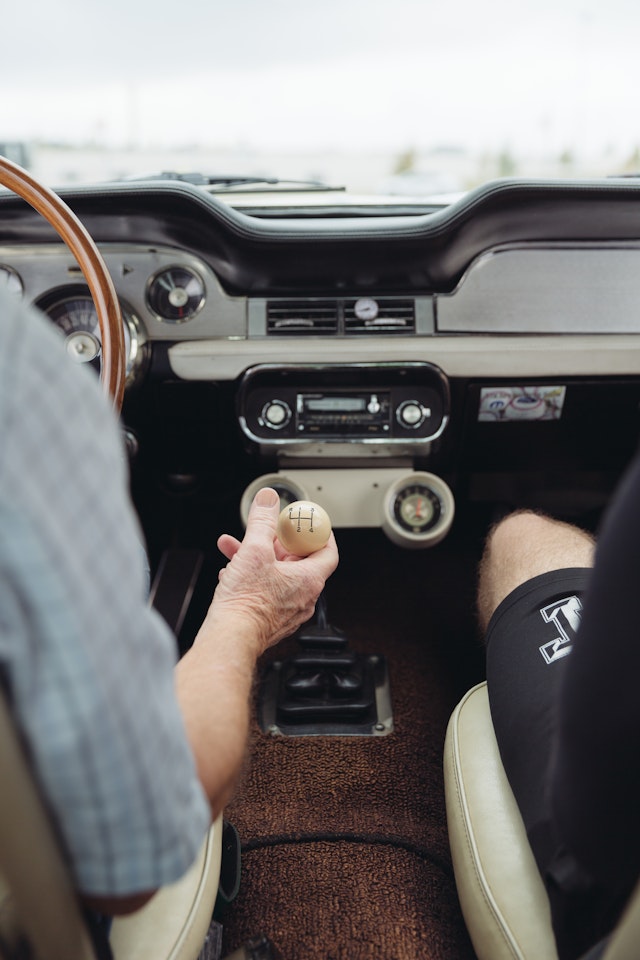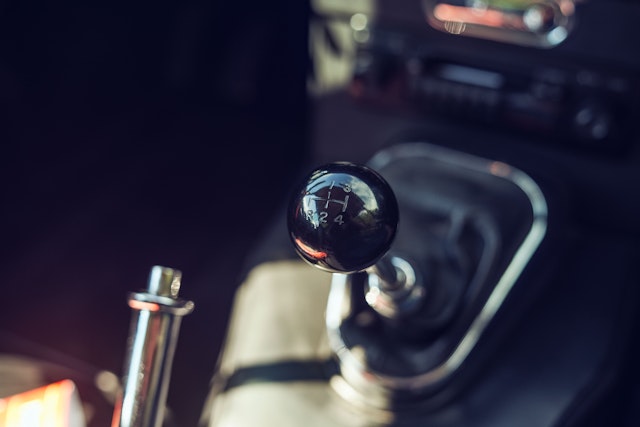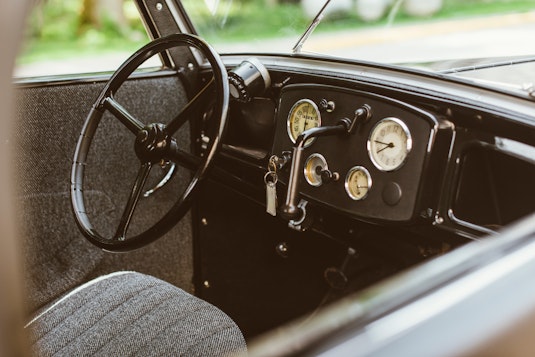How to Drive a Stick Shift Car

There’s one big thing that separates drivers into two camps: manual transmission. There are those who know how to drive a stick shift car, and those who live in an all-automatic world.
We’ll admit to being a little biased - we think that driving a stick shift car with manual transmission opens up a whole new world of classic car appreciation. It’s honestly so satisfying to be in total control of a vehicle, even if the learning curve can be a bit steep and we still have the occasional stall.
Admittedly, it’s a bit of a dying art - a brand new manual transmission vehicle is a rare thing indeed, and with so many more supercars being produced with automatic transmissions, it’s entirely possible you might never even encounter a clutch and a gearshift, let alone know how to operate one.
And yet, there’s going to be that one time you’re invited behind the wheel of that dreamy 1960s or 1970s muscle car with four on the floor, and … well, you don’t want to have to say no to a drive in that, do you?
Of course not.
Let’s learn the basics. Here’s all about how to drive a stick shift car:
Know your moving parts:
An automatic transmission has two things to worry about: the gas and the brake. Shifting is done automatically (hence the name). A manual transmission doubles the things you’re in charge of, adding a clutch pedal to the left of the brake, plus a gearshift lever. (There’s also a parking brake that comes into play, but only briefly at the beginning and the end of the drive. Don’t sweat that one too much.)
Usually the gear shift is found coming through the floor to the immediate right of the driver, but sometimes it’ll be on the steering wheel column, and occasionally in the dashboard itself. (We see you, manual Honda Element drivers!)

What do the clutch and gearshift lever do?
The clutch engages and disengages the transmission gears from the motor shaft to the driving shaft. In clearer terms, it allows the motor to turn without also making the wheels spin along with it. When you’re in neutral, the clutch is disengaged and the motor is spinning freely. The clutch allows you to put a car into gear so you can drive forward or in reverse.
The gearshift lever lets you select which gear your car’s engine turns in. Most cars have 4-5 gears plus a reverse gear, though semi trucks often have ten gears (and as many as 18). The lowest gear starts you off slowly, and you shift up and down as you accelerate and decelerate.

Okay, so how do I use these things?
The use of a manual transmission is a lot like a dance - you’re going to be moving your arms and your legs in unison and lots of motion is going on simultaneously. To complicate things further, you might also be travelling at a high rate of speed when you’re doing some of these moves.
For your first attempt at driving a stick shift, you should be on flat, even ground - cars in neutral will roll freely, and that adds a factor that you don’t need to deal with just yet. Any large parking lot or structure will usually do - the emptier, the better. Malls and churches are your friends here.
Here we go:
First, with your foot on the brake pedal, depress the clutch pedal and disengage the parking brake. When the clutch is depressed, the gearshift lever can be moved into gear, so at this point shift it into first.
Now take your foot off the brake and (very!) slowly release the pressure your left foot/leg has on the clutch pedal. At a certain point, the clutch is going to start to grab, engage, bite or otherwise “clutch” onto the gear. When this happens, the car will start moving forward and may begin to shake or shudder a bit as it grabs the gear.
When you feel the clutch grab the gear, push down lightly on the gas pedal and you’ll begin to accelerate. At this point you can keep your foot lightly on the gas and let the clutch fully release, and voila - you’re in gear. Getting a car into first gear and getting it moving without stalling out is absolutely the hardest thing to grasp when it comes to driving stick shift. Don’t worry - you’ll get it.
To shift up to second gear, the dance is the same (though it’s a lot easier once you’re rolling): depress the clutch, shift the gear, let out the clutch and accelerate. Eventually you’ll get the hang of it and you’ll be able to get going smoothly and seamlessly.
Is that it?
That’s it! Okay, it’s a lot to keep in mind as you get started, but it quickly gets easier with practice (we speak from experience). As you learn to drive a stick shift, don’t be surprised if you stall the car, if it shakes as you get into gear or if you hear some grinding noises. Those aren’t great for the clutch (so you probably shouldn’t be learning on anything too expensive), but it’s all part of learning how to drive stick shift.
Now: Go find a classic car to drive that was once out of reach! We think you’ll love the feeling of shifting it into first and hitting the road.
If you’re looking for more of a hands-on approach to learning how to drive a stick shift, good news: The Hagerty Driving Experience is here to help. We’ve partnered with the Skip Barber Racing School to introduce drivers to the art of the stick shift.
Even better? Hagerty Drivers Club Members can access some of these events free of charge.
